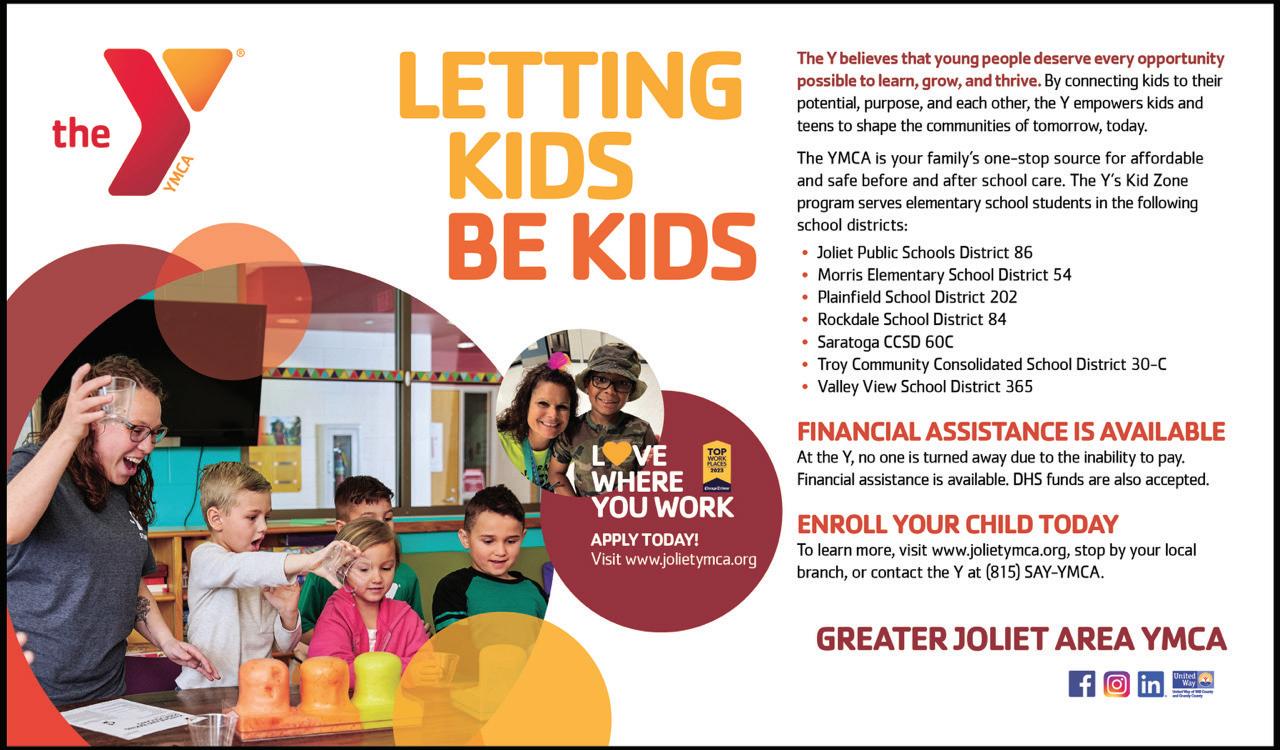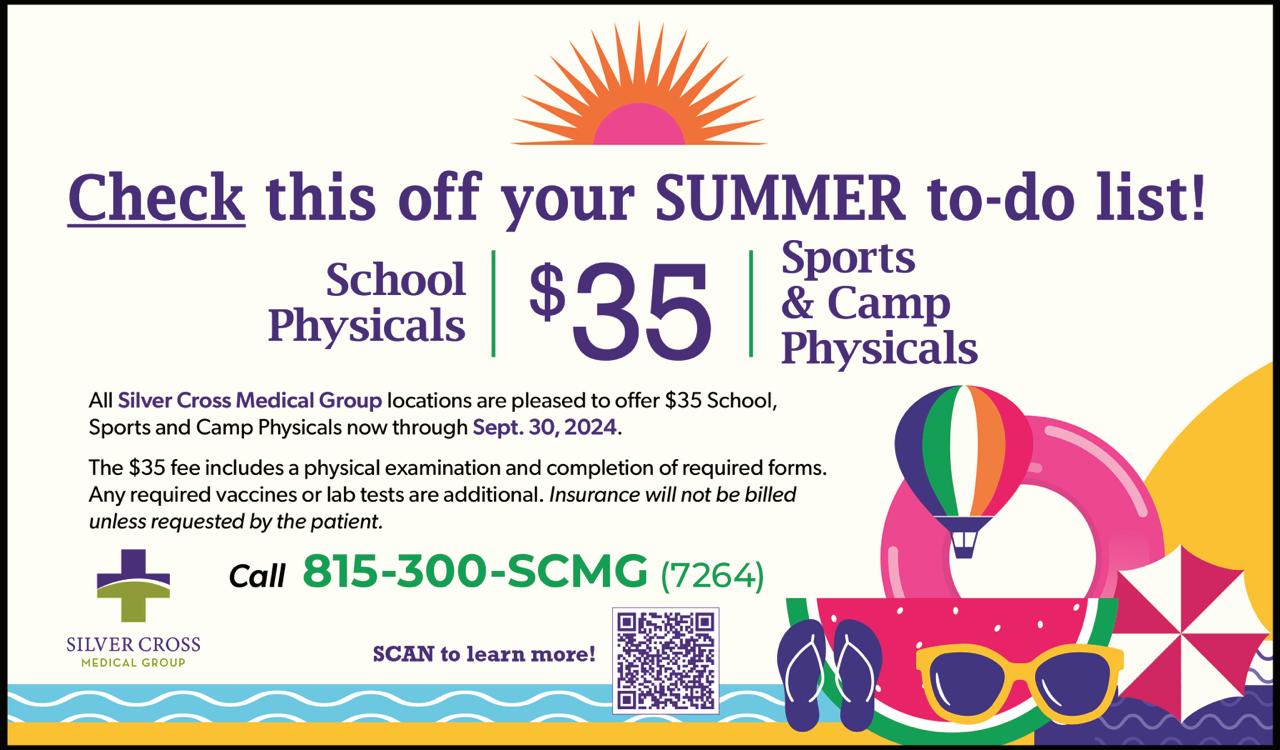








Children will soon be trading in the chimes of neighborhood ice cream trucks for the bells of school as summer vacation gives way to the start of a new academic year. August through September is prime backto-school season, with children all across the country stocking their backpacks and shopping for new school wardrobes.
There is more to getting ready for the start of school than making sure pencils are sharpened and tablets are charged. Parents and children can work together to ensure the transition back to the classroom is as seamless as possible.
Adjust sleep and wake times
Summer vacation often means letting loose of schedules for a while, and that may translate into later-than-normal bedtimes and rising a little later in the morning. Everyone in the household will have to reacquaint themselves with schedules that ensure kids get to school on time. A few weeks before the first day of school, start incrementally going to bed at an earlier time and start waking up earlier each morning. Try to plan out the increments so that by the time the last few days of summer vacation wind down, the family is on target with a waking schedule that mirrors the school
schedule.
Acclimate
Although summer vacation may involve trips that bring children in contact with other people, it may have been some time since they’ve spent five or more hours per day around 20 to 30 people their age. It may take a transition period to get used to being around a bunch of peers, so families can visit places where there tend to be crowds of kids, such as zoos, aquariums, parks, and trampoline centers. These can be low-pressure locations to dust off social skills.
Know the route or plan for school transportation
Students may be driven independently, ride the school bus, walk or bike, or carpool with others to and from school. Families can establish plans so that getting to and from school is not something kids need to worry about. Practice routes and timing, taking into consideration that when schools open there will be much more traffic. Parents can reassure children that there will be a learning curve, but all of the kinks generally get worked out during the first week.
Avoid “summer slide”
Most students don’t want to think
about studying, homework and testing while on summer break, but it can be beneficial to stay current on some lessons. Summer slide refers to the loss of some of the learning achieved during the previous school year over the summer break. Some experts say summer slide is overstated, but it can’t hurt for students to refresh their memories on some math, science and language arts concepts over break so that they will be ready to hit the books when the new school year begins.
Prep for school lunches
Children and adults can work together to map out healthy eating options for school lunch. Many school districts have lunch plans that can be purchased through an online account. Participating students simply enter a number or swipe a code at checkout. School lunches are built to be nutritionally diverse and have options that even picky eaters will like.
School is right around the corner, and families should get ready for the routine and needs that go with the academic year as the first day draws closer.
Success in school can carry over to successful experiences later in life. That underscores the benefits of developing skills in the classroom. Students learn in their own way, and at times there may need to overcome various obstacles.
The job of education does not fully fall on educators and administrators. Education begins at home. Research has found that kids benefit significantly when parents and other caregivers are strongly involved in a child’s education. A 2020 study published in the Journal of Prevention and Intervention in the Community found that parental involvement in a child’s education is associated with improved academic performance. Specifically, children whose parents are more involved in their educations have higher levels of academic performance than children whose parents were not as involved.
A 2005 study from researchers at the Johns Hopkins University Center of School, Family and Com-
munity Partnerships showed that school practices that encourage families to support their students’ math learning at home led to higher percentages of students scoring at or above proficiency on standardized math tests. Additional research indicates the benefits also extend to other subjects and areas of learning, including language comprehension and expressive language skills.
With so much to gain from parental involvement in students’ educations, parents can embrace these strategies to get more involved.
• Develop a partnership with the teacher. Open communication with the teacher(s) can help parents stay up-to-date on what is going on in the classroom and learn early on where a student may need extra support. Then parents can offer extra guidance if it is feasible, or look into an experienced tutor.
• Be firm but supportive. Too much academic pressure may cause a child to pull back or even

test boundaries, and that can lead to students falling behind in school. Parents must find the right level of involvement and guide their kids without sounding like good grades are “make or break” the relationship.
• Attend school functions. Parents can go to open houses, backto-school nights, conferences, and other events held at school to show support and interest in their children’s education. Involved parents also build school-based networks this way, which can be called upon if their student needs additional support in the future.
• Establish a schedule at home. Students can benefit from a schedule, with regular bedtime, homework time and opportunities to relax. Knowing what to expect and when to expect it can take some of the stress out of learning and studying, according to Nemours health.
Parents working in concert with schools and their children can lead

High school graduates or individuals looking to explore continuing education at any age have various options. Among the most popular options is enrolling in a college or university. Studying a trade in a vocational school is another popular option.
What are vocational schools?
Vocational schools are sometimes referred to as career or trade schools. Vocational schools tend to offer certificate programs that are much shorter in duration than traditional college degree programs, and train students for skilled jobs. Vocational programs prepare individuals for careers in electrical work, hairstyling and cosmetology, certified nursing aids, automotive work, and HVAC services, among others.
Cost of attendance
Cost of education is an important factor when choosing a ca -
reer, and the cost of vocational school is no exception. The College Board says trade school costs between $5,000 and $15,000 on average for a three- to 18-month program. By comparison, the national average for a two-year degree program at public and private colleges can range from $3,621 to $15,333 per year. The cost to attend a four-year college is considerably higher, though it varies widely by institution.
NerdWallet reports that, as of 2021, total student loan debt in the United States exceeded $1.61 trillion. Vocational school can be a much more affordable option than attending college, without the specter of large amounts of debt looming once the training is over.
An obvious job path
Many higher education concentrations are confronting low
enrollment, while vocational programs are doing quite well, according to The Hechinger Report, which covers innovation and equality in education. The reason may be that vocational training presents a clear career path, and a more secure way to a solid job. Mechanic and repair trade programs had an enrollment increase of 11.5 percent from spring 2021 to 2022, indicates the National Student Clearinghouse.
“America is lending money it doesn’t have to kids who can’t pay it back to train them for jobs that no longer exist,” says Mike Rowe, television personality and founder of the Mike Rowe Works Foundation, which offers scholarship money to those who are pursuing the trades. Rowe feels that America has convinced people that the best path for most people is an expensive education. Meanwhile,

the Bureau of Labor Statistics indicates there are more than seven million jobs available across the U.S. that do not require a fouryear-degree.
Advantages to vocational schools
Trade school students can look forward to some benefits.
• hands-on learning
• more rigid schedule
• efficient time usage
• faster class pace
• small class sizes
• ability for licensure, where needed
• lower costs of attendance compared to other types of schooling
• instructors who are experts in their fields
Vocational schools are an option for students right out of high school or those returning to school later in life. Such schools
provide access to millions of rewarding and lucrative jobs that can offer financial security. Advantages to vocational schools
Trade school students can look forward to some benefits.
• hands-on learning
• more rigid schedule
• efficient time usage
• faster class pace
• small class sizes
• ability for licensure, where needed
• lower costs of attendance compared to other types of schooling
• instructors who are experts in their fields
Vocational schools are an option for students right out of high school or those returning to school later in life. Such schools provide access to millions of rewarding and lucrative jobs that can offer financial security.


Studying is vital to academic performance. At the dawn of a new school year, students get a fresh start to improve upon or continue strong their study habits. Teachers will be rolling out their curricula, and that may feel overwhelming. However, optimizing study skills can boost confidence in school and in areas outside of the classroom. These study tips can put students on a path for success.
• Find your optimal study space. The ideal study spot varies from student to student. Some need a quiet nook in the library, while others may prefer the sounds of nature while seated on a park bench. There’s no one-size-fits-all study location, so students may need to experiment with what works best for them. Also, The Princeton Review says that a student doesn’t need just one study space. He or she may find a change of scenery can prompt the brain to retain information better.
• Devise a study plan. Setting goals and a plan of attack allows students to space out their studying over several days. This can reduce stress and make the task seem less cumbersome.
• Avoid cram sessions. Devising a study plan is better than cramming the night before a test. TStudying with a goal of retaining the material longterm is important.
• Learn how to actively study. Some students think that studying requires reading over the material or highlighting text. Active studying involves engaging with the material and constructing meaning from the text. One way to engage with the material is to try acting as the teacher and explaining concepts to another person. Creating a study guide or even concept maps also helps one actively study.
• Balance intensity with laid-back study approaches. Students may procrastinate with their studying because they don’t want to devote a lot of time to the task. Instead, they can do shorter sessions mixed with longer sessions of studying. In fact,
• Ask for help. Asking a teacher or another student for help is not a sign of weakness. It’s a good strategy to develop early on. The longer one waits, the more difficult it may be to catch up on material. Asking for help goes handin-hand with setting up a buddy system for studying. Study groups enable students to go over material together, which can provide different perspectives and help the material resonate more effectively.
Students will spend a lot of time studying while in school. Learning how to do it effectively is vital to fulfilling one’s academic potential.






Students need many different supplies to help them move to the head of the class. Teachers frequently post lists online before school begins or advise students in the early days of the new year. Therefore, parents may want to wait to go back-to-school shopping until they learn what’s needed. There is one piece of gear, however, that students will definitely need: a backpack.
Backpacks have been helping students transport books and other materials to and from school for decades. Backpacks are not a new invention, and they actually predate school. Ötzi, a man whose mummified remains have been traced to the Copper Age, carried an animal fur rucksack during his travels. American Civil War soldiers carried bindles, and Henry Miriam developed one of the first knapsacks for the U.S military in 1877. It wasn’t until the late 1940s that kids started using backpacks for school, as more materials were available to make these bags after World War II. Backpacks are now ubiquitous on school campuses around the world.
Backpacks are available in many different sizes and styles. Not all of them are created equal, and some may be better and safer for students than others. Here are some considerations.
• Look for even, secure stitching that will not come undone easily. Inexpensive backpacks may last a few weeks, but a more durable backpack can last the school year and beyond.
• Pass up backpacks with frayed fabric edges that could unravel, says Consumer Reports.
• Opt for backpacks with zippers that have fabric flaps over them to keep water and other
elements out of the backpack, helping prolong its life span.
• Consider a synthetic material, which will be lighter to carry and more resistant to water.
• Choose a backpack with lots of compartments that can spread the weight of gear out across the bag.
• Look for bags that have padded backs and straps. The padding should be ventilated, so the backpack will not get very hot when the child is using it.
• Karena Wu, a physical therapist and owner of ActiveCare Physical Therapy in New York, encourages parents to choose backpacks with tapered straps that will conform better to their children’s bodies. A waist strap can help keep the backpack centered on the child’s torso to help disperse the load.
• If the school allows it, a rolling bag is a great way to prevent strain on the back. Verywell Family says children should carry no more than 15 percent of their bodyweight in the backpack. That means a 60-pound child shouldn’t carry more than 9 pounds.
• Select a backpack that is sized accordingly to the child. It may be tempting to buy the largest one around, but that can be cumbersome and the student may overload it.
• Many students now use laptops or tablets for school. It is a good idea to buy a backpack that has a padded pocket for tech devices to protect them during transport.









